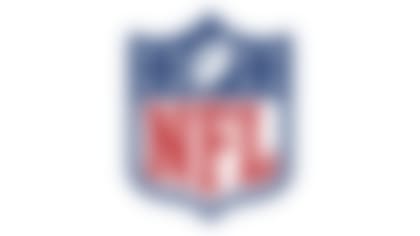But it's still difficult to sort out the genuine contenders from the teams that are merely pretenders. The clues are out there, though.
One of the numbers I looked at closely when I was coaching -- and one that is still watched regularly by many coaches around the league -- is a synthesis of statistics that I've taken to calling "toxic differential." Though I've been tracking it faithfully since my days as an offensive coordinator with the Minnesota Vikings in the late 1990s, the concept was in circulation among coaches well before then. It essentially combines turnover differential with explosive-play differential. (Explosive plays are defined as those that gain 20-plus yards.)
The reason some of us have been drawn to toxic differential is that it is an interactive statistic. Coaches have been preaching the importance of avoiding turnovers since the football was first inflated, but toxic differential makes the point that it's not merely enough to avoid turnovers; you need to generate big offensive plays, as well. On defense, while you obviously want to avoid big plays, you can't just sit back and play a deep prevent defense all the time; you have to create turnovers, too. On both sides of the ball, gambling to generate a big play often leaves you open to committing a big error. Toxic differential does a good job of showing how well teams balance risk and reward.
It has long been a proven adage that if you have a plus-2 turnover advantage on your opponent, you will win the game 80 percent of the time. If you have a plus-2 explosive-play advantage, it equally leads to winning about 80 percent of the time. If you have both of those, you win close to 95 percent of the time. You'd be hard-pressed to find any controllable statistical combination that has quite the same rate of predictive success.
This is the earliest I have begun the toxic study. I usually prefer to wait until everyone has played the same number of games. I decided to do it at the midway point to keep track of the changes as we progress through the second half of the season.
As usual, there are outliers, a team or two that ranks higher (Atlanta) or lower (Philadelphia) on the toxic scale than their records would suggest. But if the 20 years I've been doing this are any indication, nine or 10 of the top-rated toxic teams will be in the field of 12 playoff teams.
Without further ado, let's take a look at the numbers:
[![internal-link-placeholder-0]](http://static.nfl.com/static/content/public/photo/2014/10/28/0ap3000000419536.jpg)
Notable observations:
» Indianapolis is far and away the most explosive offense in the NFL, with 44 plays of 20-plus yards. The problem for the Colts is that they rank 24th in the league in terms of yielding big plays (32), giving them a net of plus-12. Their takeaways and giveaways basically average themselves out, so the clear challenge for Chuck Pagano and his staff is to do a better job limiting big plays.
» Buffalo, San Diego, San Francisco, Houston and Denver are the only teams in the NFL that rank in the top 10 in both turnover differential and explosive differential. We knew the Chargers, 49ers and Broncos were good, but this shows that the Bills and Texans are teams to watch in the second half, as well.
» Teams that are spinning their wheels are usually guilty of giving up a lot of big plays or a lot of turnovers. The Pittsburgh Steelers have been potent offensively, with Ben Roethlisberger increasingly comfortable in Todd Haley's scheme, generating 35 big plays (fifth in the NFL). But Dick LeBeau's defense has been atypically leaky, giving up 40 explosive plays (second-worst in the league).
» There's often a correlation between young quarterbacks and giveaways. Geno Smith's on-the-job training has the Jets ranked last in the league in giveaways, tied with the Jaguars in Blake Bortles' rookie campaign. Washington, with its revolving door at the QB spot, ranks 29th. One outlier here is Philadelphia, which, despite its strong record (5-2), is experiencing growing pains with Nick Foles. The Eagles rank 30th in giveaways. That's a little bit easier to take for Chip Kelly, though, because Philly ranks in the top 10 in explosive plays. High risk, high reward.
» On the flip side, New Orleans ranks 26th in toxic differential. And while the Saints looked unstoppable Sunday night against Green Bay, those toxic numbers will have to improve if this team wants to do anything besides potentially be the token representative from a weak NFC South division.
» The New York Giants' problem is giving up too many big plays (they're 29th in the league with 35 explosive plays allowed) and not generating nearly enough (20, tied for 30th). The loss of Victor Cruz will be acutely felt in this category, because Eli Manning simply doesn't have many offensive weapons to work with.
» At a glance, you can see how teams have worked to address limitations from last season. In 2013, Buffalo was a bottom-10 team in explosive offensive plays. This year, with the solid quarterback play of Kyle Orton and the early maturation of Sammy Watkins, the Bills rank fifth overall in that category. Last year, Kansas City's blitz-happy defense gave up way too many big plays. This year, with costly injuries to perennial Pro Bowlers Eric Berry and Derrick Johnson, the Chiefs have played a more conservative system and yielded the fewest explosive plays in the NFL. (That comes at a price, though -- K.C. ranks next-to-last in takeaways.)
Follow Brian Billick on Twitter @coachbillick.




